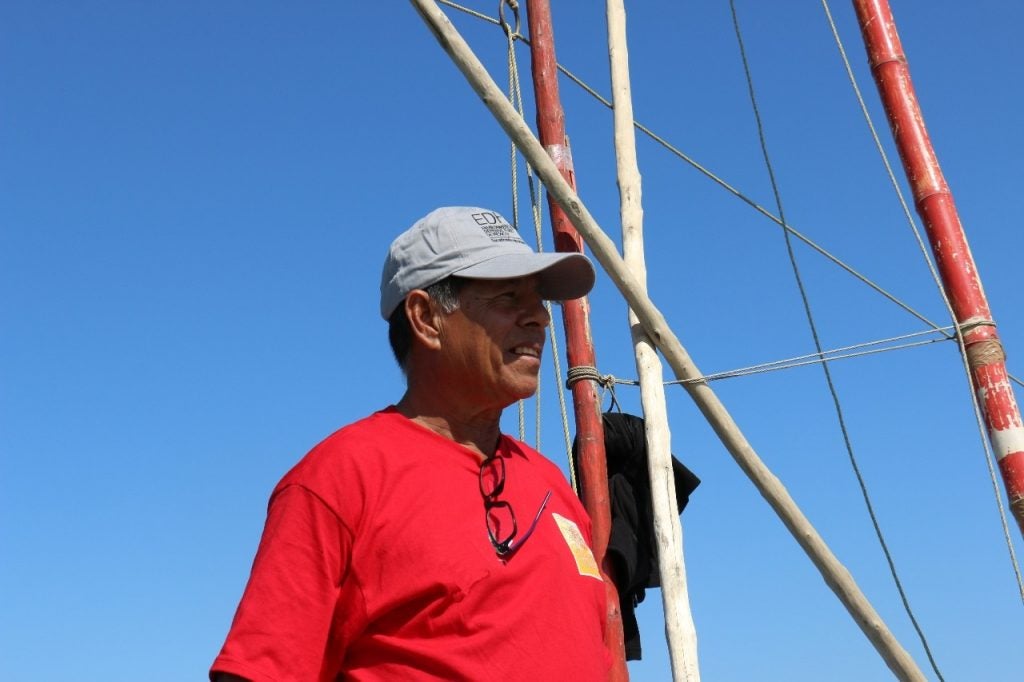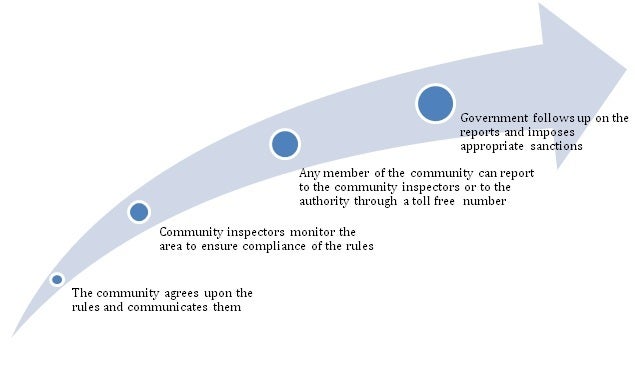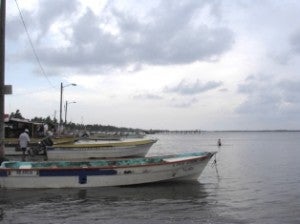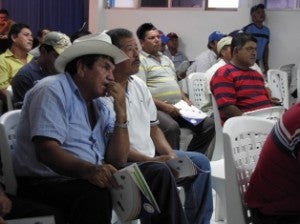A year ago, Fidel Insunza was not very optimistic about his future in fishing. With more than 30 years on the water, he has seen prosperous times come and go in Altata-Ensenada del Pabellon, a coastal lagoon system in Sinaloa, Mexico. Back in the “good days,” as he calls them, his income allowed him to buy a brand new pick-up truck or take his whole family on vacation to participate in Mazatlan’s famous Carnival. “Those were the days,” he recalls with nostalgia. Today, his income has reduced to a third of what it used to be. But he is not ready to give up on fishing just yet. “This is my life, the heart of my community, and I would choose to be a fisherman once more if I was born again. The only difference is that I would do it more responsibly,” he says. Read More
EDFish
Selected tag(s): Sinaloa
In Sinaloa, Mexico fishermen are rewriting their legacy
Fishermen Embrace Change in the Sinaloa, Mexico Shrimp Fishery: Part III
Community-based enforcement: a positive and unexpected result of catch shares in Sinaloa.
As we mentioned in the previous two posts of this blog series the coastal shrimp fishery in Sinaloa, Mexico has been managed under a catch share program for two years now. Over 10,000 legal fishermen work in the fishery from Sinaloa, a coastal state in the northwestern part of Mexico.
One of the biggest challenges we have faced in working with the coastal shrimp fishery is the vast amount of illegal fishing activities. Nonetheless, through great efforts by the Mexican federal government, fishermen and NGOs, we have achieved great milestones in this project including the first science-based estimation of a total allowable catch for shrimp by Inapesca (the Mexican Fisheries and Aquaculture Research Institute), the allocation of catch shares to 140 cooperatives, and the unprecedented financial support of the Mexican government to hire a third-party firm to monitor landings.

Figure 1: Location of the two lagoon systems under a community-based surveillance and enforcement system.
Still, there is plenty of road to travel in this process of implementation to get the system to function properly and produce the biological, economic and social benefits possible with catch shares. Surveillance and enforcement have become an important issue. There are not enough government inspectors to ensure compliance with rules and regulations, so our team has worked with fishing communities to design and assist in setting up a community-based monitoring and enforcement system.
At the beginning of this year, we helped organize cooperative meetings in two of the largest lagoon systems in Sinaloa: Altata-Ensenada Pabellones and Santa María-La Reforma (see Figure 1). The overarching goal of these meetings was to get community members together so they could come up with a system that included: codes of conduct that promote sustainable fishing practices, designate community inspectors (which would ensure compliance with these codes) and a “Surveillance and Enforcement Committee” in each lagoon system.
The community-based enforcement initiative works like this: the agreed upon codes of conduct are communicated to all participants via coop leaders, large signs, and portable plastic cards that fishermen are to carry on board their skiff. If any member of the community identifies somebody breaking any of the rules stipulated in the codes of conduct, that person has two options, either to call a 1-800 government phone number and place an anonymous report, or to call a community inspector who will place the report for them. These numbers are printed on the signs and the plastic cards. When the report is done by the community inspector, the Surveillance and Enforcement Committee has the obligation of reporting the government and follow up.
Conapesca, the Mexican Fisheries Management Authority, has approved and supported this co-management scheme by providing a substantial amount of financial resources to implement it and is considering how it could be facilitated in other fisheries in Mexico.
The potential benefits of this system are considerable given the astounding number of fishermen involved in this fishery. We will begin evaluation as soon as preliminary results are available to measure the success of this initiative. One of the most important lessons we have learned is that with a fishing community this large, it is best if the users themselves lay out the rules so they have an incentive to comply with them.
Sometimes, our most important job is to simply create the conditions for success, and the rest will fall into place.
Fishermen Embrace Change in the Sinaloa, Mexico Shrimp Fishery: Part II
The fisherman’s story of frustration with compliance issues under the Sinaloa Shrimp fishery catch share was what I and two of my colleagues continuously heard during our outreach trip in Mexico in July. After spending a month in fishing camps along the Sinaloa coast giving presentations on catch shares and facilitating other exercises to communicate and dissect the issues of fishery management, we believe the fishermen we reached now understand that achieving success through catch share management will take efforts from all the stakeholders: NGOs, government, and most importantly the fishermen themselves.
Although it is easy to become frustrated with the challenges of implementing a new fishery management program, we stressed that real lasting change will take time and that our workshops aimed to empower fishermen to begin solving their own problems with compliance.
One thing that has always interested us is what type of management fishermen would implement if they could choose. To find this out, we played a “fishing game” with three rounds that mimic the problems in the fishery for both the fishermen and the authorities, while inviting fishermen to solve these issues using their own knowledge.
The first round represents the race to fish; the second round a command and control management, and in the third round the fishermen themselves are allowed to make up their own rules. In many cases the third round resulted in some form of catch shares. In response, we communicated that although the realities fishermen face are bleak, without their participation and compliance we will never see the third round in reality.
Implementing catch shares in Mexico has many challenges, and illegal fishing is one main roadblock. In 2009, a historic year for fisheries in Mexico, a TAC was set and shares were allocated for the artisanal blue shrimp fishery. NGOs and government were working together to improve fishery management, something rare in any country.
Though in a land where the laws are written well but commonly disobeyed, it has become clear that with catch shares the story is no different. For this reason it has been of utmost importance for us to maintain contact with the fishermen and continue our presence on the ground. Adaptive management and design continues to be our motto as we work with fishermen to implement innovative solutions and design to confront these challenges.
During our trip, I was a proud catch share cheerleader, and for this shrimp season in Sinaloa we have restored the faith in many fishermen that catch shares equals change. Now we must continue to work with fishermen to help design solutions that will turn theory into practice and implement innovative enforcement programs, which will reward those who are part of a catch share and gather their support as advocates and better stewards of their resource.
Never miss a post! Subscribe to EDFish via a email or a feed reader.
All content is copyrighted. Please do not republish without written permission from Environmental Defense Fund.
Fishermen Embrace Change in the Sinaloa, Mexico Shrimp Fishery: Part I
Over the past two months EDF’s outreach team traveled over 200 miles up and down the coastal state of Sinaloa, Mexico visiting five major lagoons that participated in the artisanal shrimp fishery catch share program. We were all eager to listen to fishermen’s concerns and see first-hand how this new catch share management program was progressing. The artisanal shrimp fleet opened under a catch share management system in September 2009, an initiative of the federal fisheries management authorities – Conapesca and Inapesca, with the support of EDF, WWF, and Noroeste Sustentable – a local Mexican NGO.
Conventional wisdom says that people are generally resistant to change, but what we heard from over 1,000 shrimp fishermen was quite the opposite. In fact, these fishermen want change and are ready to embrace the change that catch shares represents for them and their fishery. Furthermore, EDF’s outreach team was far from the middle aged Mexican male bureaucrat official that is status quo for these fishermen. Without anticipating it, we ended up representing change simply because we were a group of women from all different parts of Mexico coming to talk to them about how to keep their fishery alive and thriving.
It then became our goal to cultivate trust and encourage these fishermen to “keep the faith” that catch shares is a change for the better. This story portrays the sentiments of many fishermen that our team met in dozens of fishing camps.
Imagine you are an artisanal fisherman fishing in the lagoons and bays of Sinaloa, Mexico. You are a member of the same cooperative your father was during his days as a fishermen; you are a proud fisherman because you work alongside family and neighbors on the waters of the once-bountiful Gulf of California – it is your community and your livelihood.
Occasionally you daydream about your father’s fish tales of when the mangrove forests were lush and sprawling and the lagoons were teeming with big blue shrimp. A season’s catch was enough to buy a new pickup truck or take the kids to the doctor and send them to school with new books and tennis shoes. Unfortunately times have changed…
Today mangroves are being cleared for shrimp farms producing smaller, cheaper shrimp that lowers market prices of all shrimp. The lagoons are filling up due to sediment washing down from the growing number of agricultural fields, as Sinaloa has become the largest vegetable producing state in Mexico. As a result, more and more pesticides and other pollutants are entering the lagoons causing shrimp hatches to decline. Last year’s catch barely put food on the table for your family, and your cooperative is battling debt. You feel trapped and know that something has to change if you want to return to those days of plenty. No one is playing by the rules, more and more illegal fishermen are poaching the lagoons, and traditional enforcement efforts are futile.
But, this past year seemed different.
This past fishing season a team of government and NGO representatives arrived in your community to talk to you about catch shares, an innovative management system that establishes a total allowable catch for the fishery and allocates shares to each cooperative with the goal of ensuring a sustainable catch and improving the value of the fishery. Meanwhile, Conapesca has paved a brave new path by installing microchips on all the skiffs, handing out identification cards for all licensed fishermen and sending an independent company to monitor your cooperative’s landings.
You listen attentively in the workshops, and considering your circumstance the arguments are compelling. You speak with your fellow fishermen and everything looks quite promising so you decide to support the transition to catch shares and wait to see how it plays out in practice You prepare your skiff knowing your cooperative is only getting a small percentage of a total number of shrimp that you have to share with 140 cooperatives, 5,988 skiffs and more than 10,000 fellow fishermen.
The season opens and the usual “race to fish” seems to have subsided. Unfortunately though, it is an “El Niño” year so the temperatures seem colder than normal and you are catching significantly less than last year. While the monitoring company appears to be doing their job, you can’t help but notice that many illegal fishermen are still on the water, and can easily land and commercialize their catch – enforcement is lacking. Some of them you can’t blame because they are locals who are just trying to provide for their families. But your frustration mounts as temporary fishermen from other areas, even ones who migrate back from the United States for this lucrative short season, dip into the catch.
You feel robbed because you are playing by the rules, catching your share but know that there are still too many leaks in the system. The season comes to a close and it feels as though little has changed.
Stay tuned for more on the Sinaloa story …













